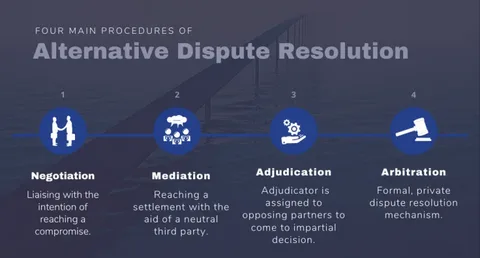Effective governance is the cornerstone of any successful organization, whether in the public sector, private enterprises, or non-profit institutions. One critical aspect of governance that often goes overlooked is the manner in which disputes within committees are handled. Strengthening governance through transparent committee dispute resolution is essential to build trust, ensure accountability, and maintain organizational integrity.
The Importance of Transparent Committee Dispute Resolution
Committees are formed to leverage diverse expertise and viewpoints, but disagreements and conflicts are inevitable in such collaborative settings. How these disputes are resolved has a direct impact on the overall governance framework. Transparent committee dispute resolution not only addresses conflicts but also fosters an environment of openness where members feel their concerns are heard and fairly considered.
When dispute resolution processes lack transparency, suspicion and mistrust can permeate the organization, leading to weakened governance and potentially compromised decision-making. Conversely, transparent processes enhance legitimacy and demonstrate a commitment to fairness, which is vital for maintaining confidence among stakeholders.
Key Elements of Transparent Committee Dispute Resolution
To strengthen governance through transparent committee dispute resolution, organizations should focus on several critical elements:
Clear Procedures
Establishing well-defined dispute resolution procedures ensures that all committee members understand how conflicts will be addressed. These procedures should be documented, accessible, and communicated clearly to avoid ambiguity.
Impartiality and Fairness
The resolution process must be impartial, with neutral mediators or facilitators, to maintain fairness and prevent bias. This impartiality reassures committee members that disputes are handled objectively.
Open Communication
Transparency thrives on open communication. Providing a platform for all parties to express their viewpoints openly encourages mutual understanding and helps identify root causes of conflicts.
Accountability and Documentation
Every dispute and its resolution should be documented to create a clear record of actions taken. This accountability mechanism helps in reviewing and improving governance processes over time.
Benefits of Strengthening Governance Through Transparent Committee Dispute Resolution
Implementing transparent dispute resolution mechanisms strengthens governance in several ways:
- Enhanced Trust: Transparency builds trust among committee members and stakeholders, ensuring continued cooperation and commitment.
- Improved Decision-Making: When disputes are resolved openly and fairly, committees can focus on their primary objectives without lingering conflicts.
- Risk Mitigation: Clear resolution processes reduce the risk of unresolved disputes escalating into larger organizational issues.
- Organizational Reputation: Demonstrating commitment to transparent governance practices enhances an organization’s credibility and public image.
Conclusion
Strengthening governance through transparent committee dispute resolution is not just about managing conflicts—it’s about fostering a culture of openness, accountability, and trust. Organizations that prioritize transparent resolution processes empower their committees to function more effectively, leading to better decisions and stronger governance overall. By embracing these principles, organizations can navigate disputes constructively and ensure long-term success.


